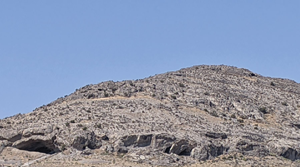Refine listing
Actions for selected content:
1419092 results in Open Access
3D dynamics and control of a snake robot in uncertain underwater environment
-
- Article
-
- You have access
- Open access
- HTML
- Export citation
What drives the growth of an open pension fund?
-
- Journal:
- Journal of Pension Economics & Finance / Volume 24 / Issue 2 / April 2025
- Published online by Cambridge University Press:
- 19 September 2024, pp. 281-296
-
- Article
-
- You have access
- Open access
- HTML
- Export citation
Democratic Backsliding in Africa? Autocratization, Resilience, and Contention. Edited by Leonardo R. Arriola, Lise Rakner, and Nicolas van de Walle. Oxford: Oxford University Press, 2023. 297p. $115.00 cloth.
-
- Journal:
- Perspectives on Politics / Volume 22 / Issue 4 / December 2024
- Published online by Cambridge University Press:
- 19 September 2024, pp. 1344-1345
- Print publication:
- December 2024
-
- Article
- Export citation
Dietary Variability in the Varna Chalcolithic Cemeteries
-
- Journal:
- European Journal of Archaeology / Volume 28 / Issue 1 / February 2025
- Published online by Cambridge University Press:
- 19 September 2024, pp. 24-42
-
- Article
-
- You have access
- Open access
- HTML
- Export citation
Iconografia della destra. La propaganda figurativa da Almirante a Meloni by Luciano Cheles, Rome, Viella, 2023, 220pp +76 illustrated pages, €29.00 (paperback), ISBN: 9791254691939
-
- Journal:
- Modern Italy / Volume 30 / Issue 1 / February 2025
- Published online by Cambridge University Press:
- 19 September 2024, pp. 116-117
- Print publication:
- February 2025
-
- Article
- Export citation
High-elevation sheep and goat provisioning on the Tibetan Plateau, 3000–2200 BP
-
- Article
-
- You have access
- Open access
- HTML
- Export citation
America in Italian Culture: The Rise of a New Model of Modernity, 1861–1943 by Guido Bonsaver, Oxford, Oxford University Press, 2023, xx + 554 pp., £120 (hardback), ISBN 9780198849469
-
- Journal:
- Modern Italy / Volume 30 / Issue 1 / February 2025
- Published online by Cambridge University Press:
- 19 September 2024, pp. 123-124
- Print publication:
- February 2025
-
- Article
- Export citation
Agency Entrenchment: Sociological Legitimacy in a Politically Contested Occupation
-
- Journal:
- Law & Social Inquiry / Volume 49 / Issue 4 / November 2024
- Published online by Cambridge University Press:
- 19 September 2024, pp. 2523-2546
- Print publication:
- November 2024
-
- Article
-
- You have access
- Open access
- HTML
- Export citation
Outliving an Empire: Mehmed Ziya, the Former Ottoman Bureaucrat, and His Pension Claim across Post-Ottoman Lebanon and Cyprus in the 1920s
- Part of
-
- Journal:
- Contemporary European History , First View
- Published online by Cambridge University Press:
- 19 September 2024, pp. 1-16
-
- Article
-
- You have access
- Open access
- HTML
- Export citation
Lesotho and the QwaQwa Ski Resort, 1975–82: Border Disputes and South Africa's Increasingly Deadly Responses
-
- Journal:
- The Journal of African History / Volume 65 / Issue 2 / July 2024
- Published online by Cambridge University Press:
- 19 September 2024, pp. 207-222
-
- Article
-
- You have access
- Open access
- HTML
- Export citation
Swirling electrolyte. Part 2. Secondary circulation and its stability
-
- Journal:
- Journal of Fluid Mechanics / Volume 995 / 25 September 2024
- Published online by Cambridge University Press:
- 19 September 2024, A8
-
- Article
-
- You have access
- Open access
- HTML
- Export citation
Healthcare worker attitudes on routine non-urological preoperative urine cultures: a qualitative assessment
-
- Journal:
- Infection Control & Hospital Epidemiology / Volume 45 / Issue 10 / October 2024
- Published online by Cambridge University Press:
- 19 September 2024, pp. 1156-1161
- Print publication:
- October 2024
-
- Article
-
- You have access
- Open access
- HTML
- Export citation
Han Feizi on Reputation-Driven Disobedience: A Comparative Study
-
- Journal:
- American Political Science Review / Volume 119 / Issue 3 / August 2025
- Published online by Cambridge University Press:
- 19 September 2024, pp. 1130-1142
- Print publication:
- August 2025
-
- Article
-
- You have access
- Open access
- HTML
- Export citation
2022 Pierre Lalive and John Henry Merryman Fellowship in Art and Cultural Heritage Law
-
- Journal:
- International Journal of Cultural Property / Volume 30 / Issue 3 / August 2023
- Published online by Cambridge University Press:
- 19 September 2024, p. 340
-
- Article
-
- You have access
- HTML
- Export citation
William L. Marcy . Narcostates: Civil War, Crime, and the War on Drugs in Mexico and Central America. Boulder, CO: Lynne Rienner Publishers, 2023. Bibliography, appendix, index, maps, figures, 359 pp.; Hardcover $115.00, e-book: $115.00.
-
- Journal:
- Latin American Politics and Society / Volume 67 / Issue 3 / August 2025
- Published online by Cambridge University Press:
- 19 September 2024, pp. 148-149
-
- Article
- Export citation
Predicting potential habitat distribution of the invasive species Rhynchophorus ferrugineus Olivier in China based on MaxEnt modelling technique and future climate change
-
- Journal:
- Bulletin of Entomological Research / Volume 114 / Issue 4 / August 2024
- Published online by Cambridge University Press:
- 19 September 2024, pp. 524-533
-
- Article
- Export citation
Long-Term Follow-Up of Non-Paraneoplastic Autoimmune Encephalitis: A Canadian Single-Center Experience
-
- Journal:
- Canadian Journal of Neurological Sciences / Volume 52 / Issue 3 / May 2025
- Published online by Cambridge University Press:
- 19 September 2024, pp. 392-398
-
- Article
-
- You have access
- Open access
- HTML
- Export citation
Fluid–acoustic–structure resonance mechanism of a plane cascade via a low-speed wind tunnel test
-
- Journal:
- Journal of Fluid Mechanics / Volume 995 / 25 September 2024
- Published online by Cambridge University Press:
- 19 September 2024, A7
-
- Article
-
- You have access
- Open access
- HTML
- Export citation
Responding to epidemics: the case of the Nguyễn Dynasty, focusing on the period 1802–1883
-
- Journal:
- International Journal of Asian Studies / Volume 22 / Issue 2 / July 2025
- Published online by Cambridge University Press:
- 19 September 2024, pp. 201-217
-
- Article
-
- You have access
- Open access
- HTML
- Export citation




